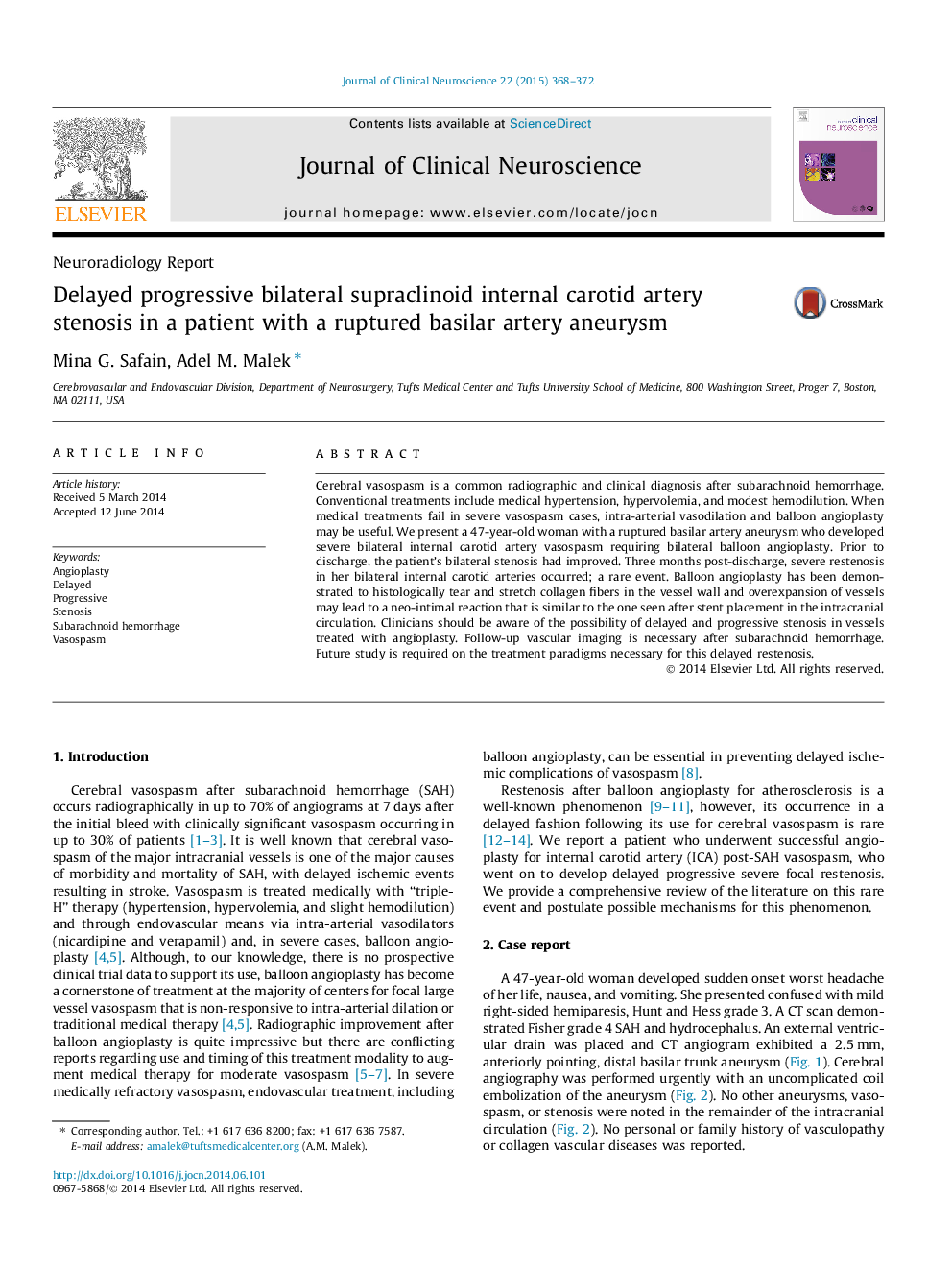| Article ID | Journal | Published Year | Pages | File Type |
|---|---|---|---|---|
| 3059563 | Journal of Clinical Neuroscience | 2015 | 5 Pages |
Cerebral vasospasm is a common radiographic and clinical diagnosis after subarachnoid hemorrhage. Conventional treatments include medical hypertension, hypervolemia, and modest hemodilution. When medical treatments fail in severe vasospasm cases, intra-arterial vasodilation and balloon angioplasty may be useful. We present a 47-year-old woman with a ruptured basilar artery aneurysm who developed severe bilateral internal carotid artery vasospasm requiring bilateral balloon angioplasty. Prior to discharge, the patient’s bilateral stenosis had improved. Three months post-discharge, severe restenosis in her bilateral internal carotid arteries occurred; a rare event. Balloon angioplasty has been demonstrated to histologically tear and stretch collagen fibers in the vessel wall and overexpansion of vessels may lead to a neo-intimal reaction that is similar to the one seen after stent placement in the intracranial circulation. Clinicians should be aware of the possibility of delayed and progressive stenosis in vessels treated with angioplasty. Follow-up vascular imaging is necessary after subarachnoid hemorrhage. Future study is required on the treatment paradigms necessary for this delayed restenosis.
